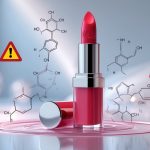Anti-Aging Beauty Tools Suddenly Delivering Results for Over-35 Crowd
Enhancing Results with Exfoliation and Active Ingredients
Nobody tells you: using every new device (rollers, microcurrent, whatever late-night ad is trending) is mostly pointless unless your skin is prepped. Exfoliation and ingredients are the real MVPs—everything else is just a fancy distraction, honestly.
Chemical vs Physical Exfoliation
Physical exfoliation—scrubs, beads, grains—feels satisfying but always leaves my cheeks red for no reason. Is that good? Who knows. Derms in lab coats keep quoting a 2023 study: chemical exfoliants are better for fine lines, less microtearing, more “controlled cell turnover.” My aunt still swears by sugar scrubs, though.
Acids like glycolic let me keep most of my skin on my face. Biggest screw-up? Mixing both types in one day—rashy disaster. Every dermatologist says twice-weekly chemical exfoliation is easier on the skin. Beauty editors call some luxury face polishes “gentle,” but my skin wants ingredient lists, not promises.
Also, why does everyone ignore body exfoliation? My knees look prehistoric. Friends have shiny faces but desert-dry arms. Am I the only one noticing this?
Alpha Hydroxy Acids (AHAs) and Glycolic Acid
AHAs are everywhere, and glycolic acid never goes on sale. Supposedly, under 10% is “safe,” but I peeled like a lizard at anything higher. There’s evidence AHAs help with dryness and texture—the Allure list says so, anyway.
Glycolic’s tiny molecules soak in fast—good if you’re impatient, but also, ouch. My derm says start with lactic acid if you’re dry, then graduate up. But someone out there is allergic to citric acid, so… patch test, I guess? And mixing strong acids with retinol or at-home peels because a TikTok doc said so? Recipe for chaos. Layering isn’t for the impulsive.
Addressing Pigmentation and Uneven Tone
Sunspots basically mock every product I own. Hyperpigmentation got worse in my thirties, and exfoliation only helped once I got specific—chemical exfoliators with kojic acid, sometimes vitamin C, and maybe a little salicylic. Peels with targeted acids (see Ulta’s list) claim to fade patches, but honestly, the right formula matters more than the fanciest jar.
Sometimes I chase “radiance” and just get blotchier. Trusted estheticians keep reminding me: exfoliation alone won’t fade pigmentation—sunscreen, niacinamide, and brightening serums do the heavy lifting.
Weirdly, my dark spots fade more in winter. Nobody on Instagram talks about that. Maybe pigmentation is about timing and sticking with a routine. Or maybe I just notice small wins more when I stop staring into magnifying mirrors.
Natural and Holistic Approaches to Anti-Aging Tools
Suddenly, everyone’s hyping blue light wands and “jade” rollers—now people over 35 swear they’re seeing smoother lines, not just from serums. If you trust something just because the box screams “collagen!” you’re probably setting yourself up for disappointment.
Natural Ingredients in Devices
Apparently, every new tool crams in some rare berry or plant extract. Check any fancy facial gadget—hyaluronic acid rollers, microcurrent wands with aloe pads—but does any of it get into your skin? Honestly, who knows. There’s a difference between slapping buzzwords on packaging and actual results. Peptide masks heated in a tool? Sure, the logic’s there (warmth helps absorption), but “helps” isn’t “guaranteed.”
Devices now pair vitamin C serums or botanical blends with their tech, and derms love to talk antioxidants fighting free radical damage. But really, is a retinol-loaded roller better than just using your hands? Half the benefit is probably the ritual. Science exists for green tea and camellia oil, but don’t toss your sunscreen just because you used a “natural” tool.
Supporting the Skin Barrier
Every product screams “barrier support”—I’ve fried my face copying some influencer’s K-beauty routine with a spatula I forgot to charge. Most devices claim to boost the barrier by “micro-massaging,” “boosting absorption,” or “increasing blood flow.” Sometimes that’s true, but if you trash your moisture layer, you’ll age faster than you can say “tranexamic acid.”
If your skin stings after a cold spoon or gua sha, that’s not “detox,” that’s damage. Cupping sets and gemstone rollers are everywhere now—supposedly help lymphatic drainage, but skip the oily primer and get ready for breakouts. Face yoga? Maybe relaxing, but I’m skeptical about “barrier support” no matter what holistic bloggers say.
Lifestyle and Wellness for Youthful Skin
Sleep. Ugh. People act like it’s some magical reset button, but who’s actually clocking eight hours? Between my neighbor’s toddler’s 3 a.m. shrieks and my phone pinging about some new LED mask, I’m lucky if I get five. Dermatologists love to drone on about circadian rhythms and cortisol and how your face will basically melt off if you don’t snooze enough. Maybe they’re right, but honestly, I’d rather have another coffee. Suncare, though? If I had to put money down on one thing that helps, it’s sunscreen. Still, nobody Instagrams themselves with a thick white streak of zinc on their nose at brunch, so here we are.
All these “holistic” anti-aging routines? They boil down to stuff nobody wants to do: daily SPF, eating food that tastes like cardboard because it’s “antioxidant-rich,” slogging through slow strength workouts, and pretending meditation will fix everything. Sure, meditation might help your mood, but if you’re sleeping on a pillowcase that hasn’t seen a washing machine in a month, good luck manifesting glowy skin. Actual science says boring, consistent habits win out over flashy gadgets. But I know someone’s going to DM me asking if celery juice supercharges their microcurrent device. Please. Don’t.



